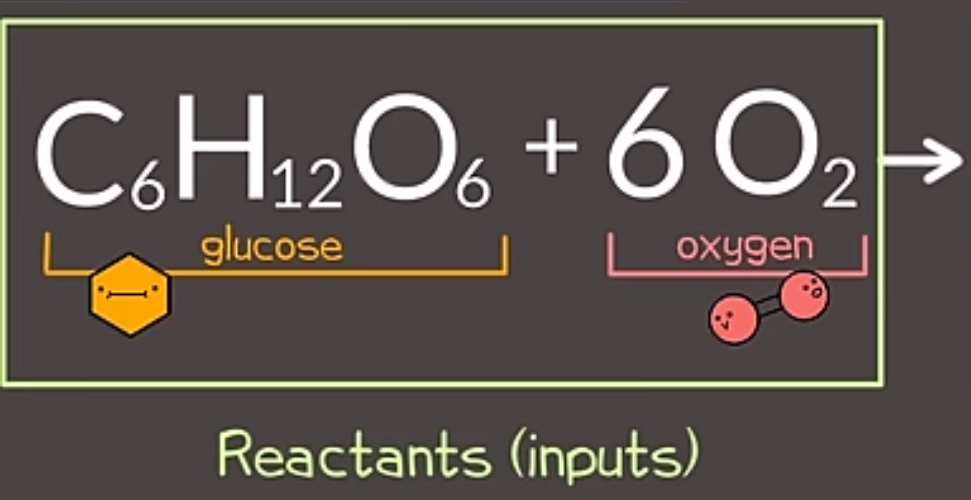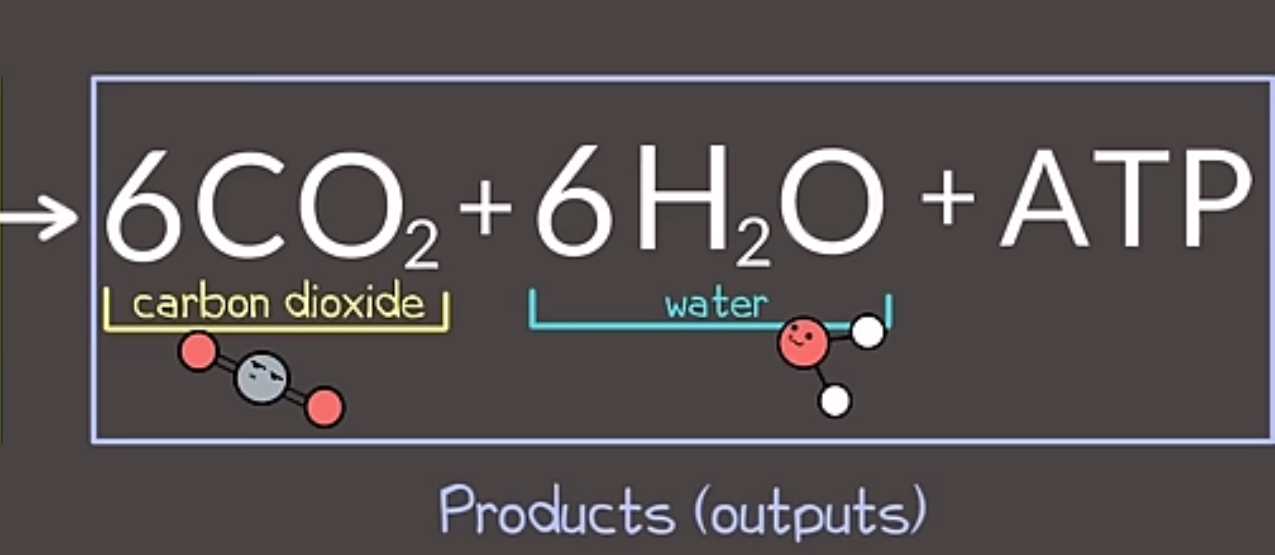Aerobic Cellular Respiration
1/17
Name | Mastery | Learn | Test | Matching | Spaced |
|---|
No study sessions yet.
18 Terms
Aerobic Cellular Respiration
the process of making ATP
What are Eukaryotes
organisms that have nucleus and membrane-bound organelles (e.g. mitochondria)
What are Prokaryotes?
are single celled organisms without a nucleus or membrane-bound organelles (no mitochondria, endoplasmic reticulum, Golgi apparatus)
In eukaryotes, in what membrane-bound organelle does most of the process of cellular respiration happen?
mitochondria
What are the reactants (inputs) of cellular respiration?
Glucose and Oxygen

What are the products (outputs) of cellular respiration?
Carbon Dioxide, Water, ATP

What is the process of photosynthesis?
Reactants (Inputs): Carbon Dioxide, Water
Process: w/ light
Products (Outputs): Oxygen, Glucose

What does ATP stand for?
Adenosine Triphosphate
What is ATP for and why do all cells produce it?
ATP serves as a cell’s primary energy currency.
ATP is used in cells to power different kinds of cellular processes— muscle contraction, synthesis of molecules, nerve impulse transmission. Without ATP, work in the cell cannot be done.
Cellular respiration makes glucose
FALSE.
Photosynthesis MAKES glucose
Cellular respiration BREAKS DOWN glucose to MAKE ATP
Cellular Respiration breaks ATP down.
FALSE.
Cellular Respiration breaks GLUCOSE down to make ATP.
Cellular Respiration breaks glucose down to make ATP
TRUE
Photosynthesis makes ATP
FALSE
Photosynthesis MAKES GLUCOSE, which is later broken down to make ATP (Cellular Respiration)
Photosynthesis makes glucose
TRUE
What’s the difference between Autotrophs and Heterotrophs?
Autotrophs - organisms that make their own energy
Heterotrophs - organisms that get their energy source from something else
Plants are autotrophs
TRUE
They can make their own glucose through photosynthesis, then break down that glucose to form ATP through cellular respiration
Write down the process of cellular respiration

Write down the process for photosynthesis
